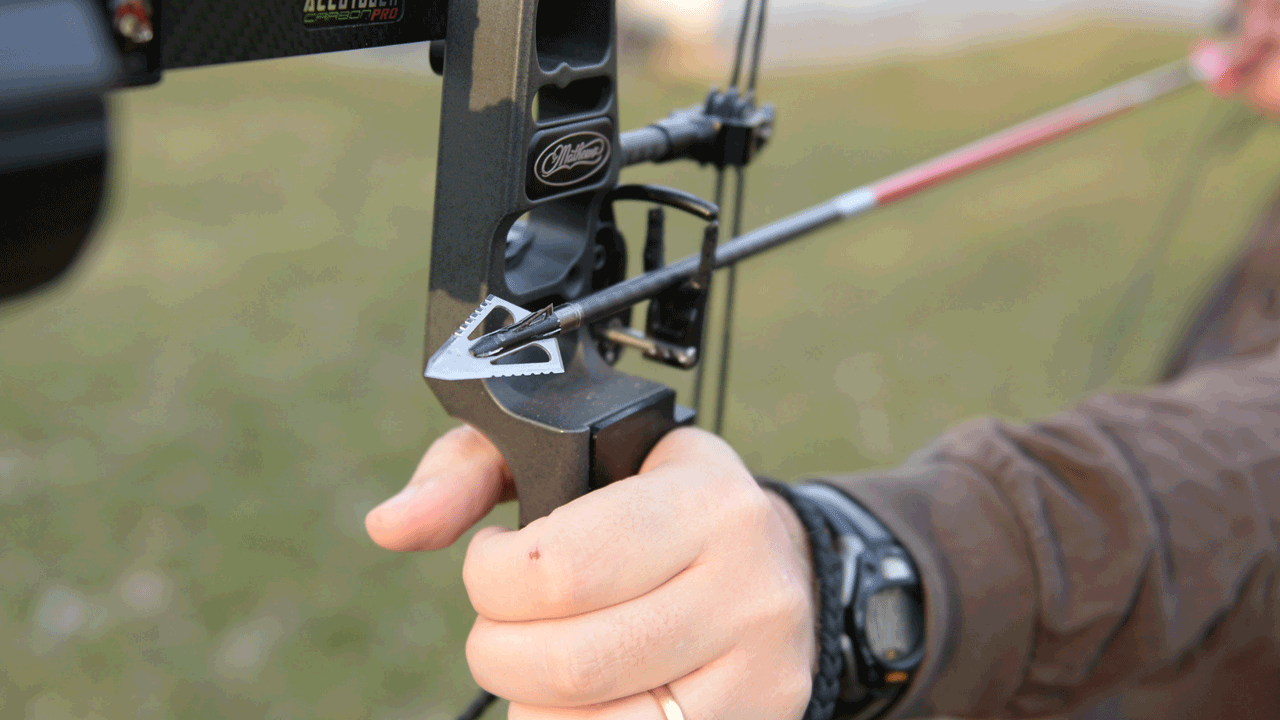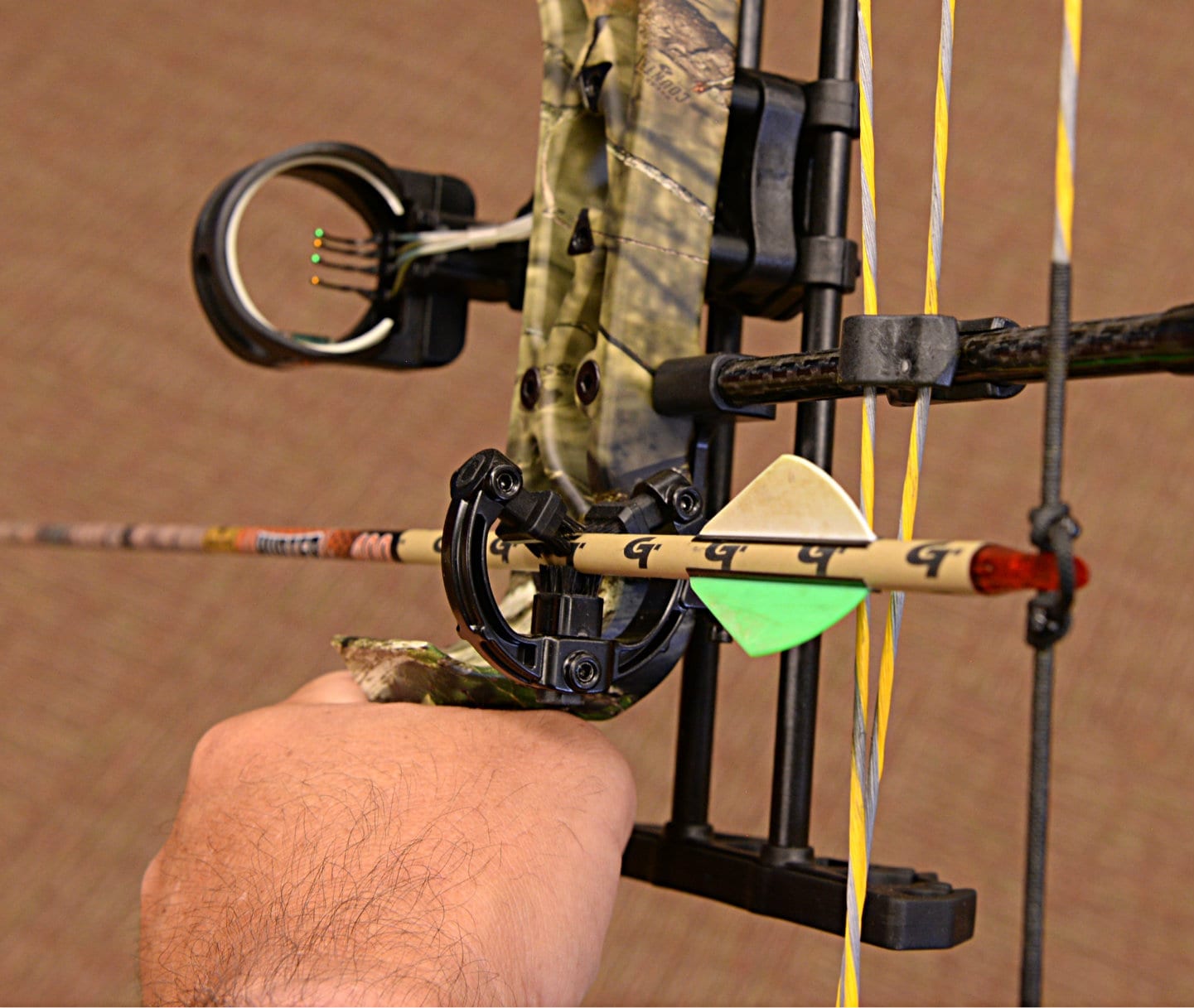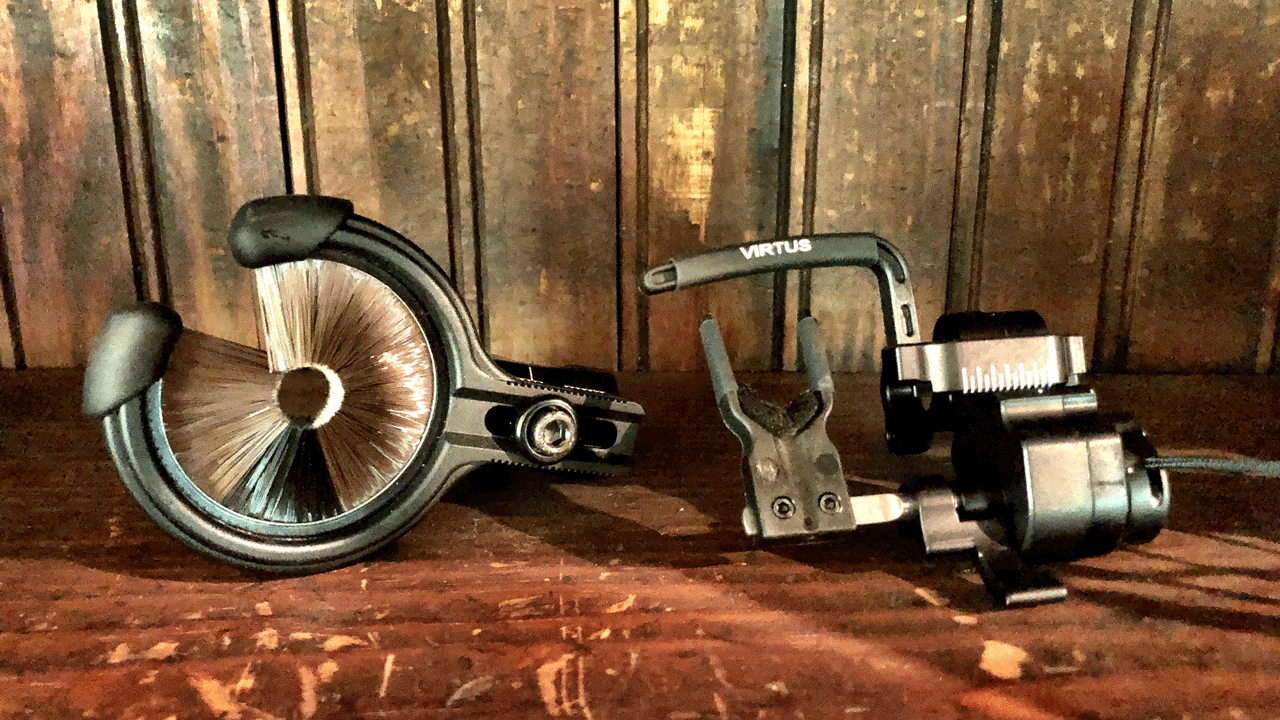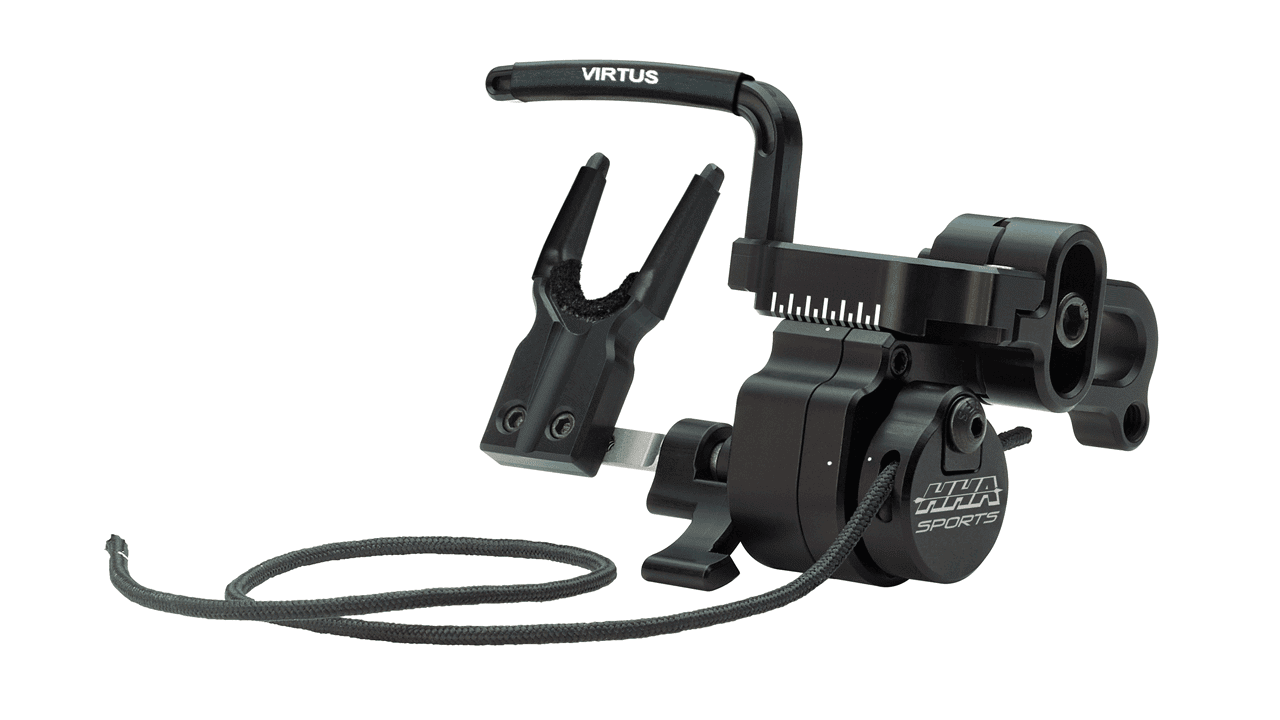Should bowhunters opt for a fall-away rest?
Or a static one?
This might be the new Ford vs Chevy argument in the bowhunting world.
Truth be told, there are quality versions of both and there are not-so-quality versions of both. And every fall, you can bet your bottom dollar there will be plenty of deer killed with both types of rests. Having noted that, there are differences between the two that might make one more or less attractive to an individual hunter. So what’s the best rest when it comes to a fall away rest vs. static rest? It’s up to you to look at how, what and where you hunt, and figure out which rest is right for you.

What’s the best arrow rest for bowhunters?
Fall Away Rest vs. Static Rest
Let’s start with a look at the static rests. They are the simplest and most basic arrow rests on the market.
There are two basic types of static arrow rests – full capture and open. The open rests usually feature a blade or a set of prongs for an arrow to sit on once it’s nocked. Full-capture rests hold an arrow in place by containing it within a series of nylon fibers or padded prongs. The open, static rests have been around for a long time. At one time, they were the norm for bowhunters, but they certainly aren’t as popular as they once were.

A full-capture static rest grips the arrow with bristles or pads all the way through the draw cycle.
They are still very popular among target archers, which is an indication that they don’t hinder accuracy in any way. The big knock against them certainly is that the arrow can easily fall off the rest. If you ever spent any time hunting with one of these rests, your arrow got knocked off when it bumped against a tree or when you leaned over the front of the stand. It happened to all of us.
I’m certain it was a bowhunter tired of his arrow falling off his open rest that led to the invention of the full-capture static rest, like the NAP Quiktune 360 Capture Rest. Rests like this surround the arrow in some fashion so that it can’t possibly fall off, once the arrow is nocked and loaded. It’s a perfect solution to the open, static rest.
So why aren’t all bowhunters using full-capture static rests? There is some question about their affect on accuracy. An arrow flexes as it leaves the bow. If the arrow is surrounded by nylon fibers or padded prongs the flexing arrow is like pushing against as it leaves, the possibility exists for the rest to affect the arrow’s flight path.
There are certainly bowhunters who say these rests have no affect on accuracy, but you only have to look to tournament archers for an honest assessment. None of the successful, competitive archers use full-containment static rests on their bows. All these archers care about is accuracy, and none of them shoot a rest like this.

Which style of arrow rest do you prefer?
Does that mean these rests might keep a bowhunter from killing deer at 20 yards, and so you should avoid them? Absolutely not. You need to hit a vital area the size of a pie plate to be successful. Target archers need to hit a 10-ring the size of a nickel to bring home the prize money.
Which brings us to the drop-away rests. There are a couple varieties, but essentially the drop-away rests hold your arrow upright through the draw cycle, and then fall out of the way as the arrow leaves the bow. This means there is nothing to impact its flight. Lots of competition archers use drop-away rests on their target bows, so you know accuracy is only enhanced by these rests.
Most of the drop-aways marketed to hunters feature full-containment systems, so that once an arrow is loaded and/or sitting on the rest at full draw, it cannot fall off or out of the rest. There are three basic types of drop-away rests. Cable-driven rests employ a cord that connects to the down cable of a compound bow. When you draw the bow, the cable pulls down on the cord, which raises the rest into position. When you shoot, the cord flies up and the rest falls down.

The HHA Virtus is a fall away rest that is perfectly suited for the bowhunter.
Limb-driven rests employ a cord that connects to a top or bottom limb. The cord actually holds the rest in the down position. As the bow is drawn and the limb flexes, the cord relaxes and the rest rises into position. At the shot, the limb goes back to its normal position, pulling the cord tight and the rest down.
Inertia rests employ a cord attached to the down cable or limb, but they can be cocked in the upright position so that if you draw and let down without shooting, the arrow stays in the shooting position. Only if you release the string does inertia cause the rest to fall out of the way.
Drop-aways sound perfect, right? Well, they employ moving parts. Anytime you have a moving part, there is the possibility of failure. Extreme weather and moisture can cause problems for any moving part, including a drop-away arrow rest.
So what’s best when considering a fall away rest vs. static rest? There really is no right or wrong answer. We’re all different. I use an inertia drop-away rest. I’ve found it to be convenient for keeping my arrow contained while I’m hunting, and accurate when it comes time to shoot. I’ve never had one fail, but I don’t hunt in extreme climates.
It’s up to you to figure out what’s right for you.
Be sure to visit www.lancasterarchery.com for a look at the best of the best in bow sights.

 By
By 



